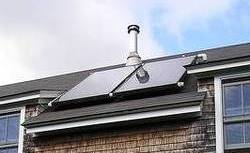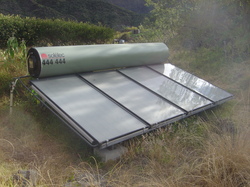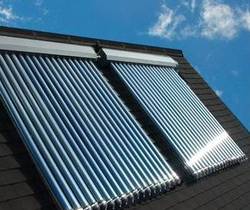Solar hot water heaters are really pretty simple to understand.
On the most basic level, all you need to do is put cold water in the sunshine so it can be warmed up to an ideal temperature.
You can then use the hot water to wash the dishes or have a nice relaxing bath.
Using solar power to heat your water is not only simple but it may also be the most cost-effective solar move you can make.
A solar thermal installation can pay for itself in less than seven years.
There are three types of solar hot water heaters:
- Flat Plate Collectors
- Batch Collectors
- Evacuated Tube Collectors
A flat plate collector runs small tubes through a box with a transparent cover.

The sun heats the fluid that runs through the tubes (either water or an antifreeze solution).
The fluid then goes to the water system (if water) or a heat exchanger (if antifreeze solution).
Why use an antifreeze solution?
In climates where the temperature goes below freezing, water would
freeze in the tubes.
With a batch collector, the storage tank and the solar absorber act as a single unit.

These systems are less expensive than flat plate collectors but are also less efficient.
Batch solar collectors are better suited for countries that stay warm all year or for seasonal use in countries like Canada (my home and native land).
If you left a batch collector unprotected on the roof of my house, you would have a tank of solid ice by the end of November.
An evacuated tube solar collector is a lighter and more efficient solar collector… and it also costs more.

These collectors consist of several glass tubes, each containing a black metal pipe.
The heat transfer fluid passes through this pipe.
The space between the pipe and the glass tube is evacuated, so little heat is lost.
Evacuated tubes are a great solution for colder climates since, even in the winter, they are able to control heat loss.
Once you have a solar collector in place and the sun is heating your water, you can pipe the water directly into the plumbing system or pump the preheated water into an existing hot water tank (this is usually the most feasible).
